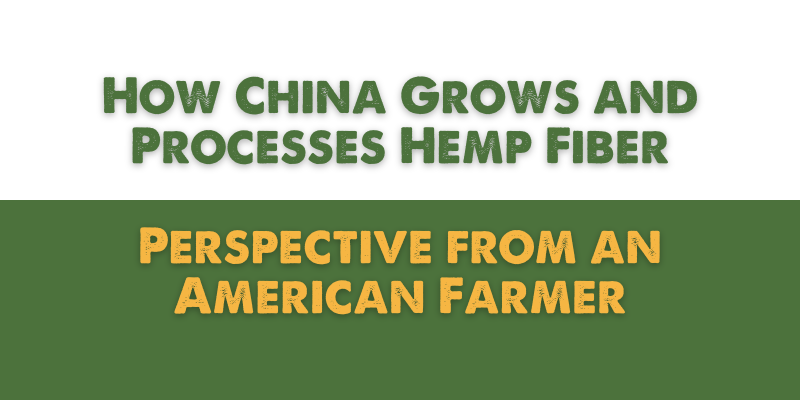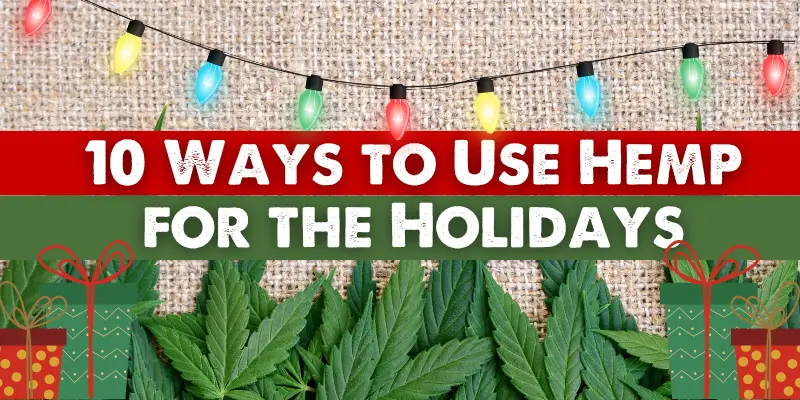

The Nutritional Promise of Hemp Microgreens with LSU
Imagine stepping into a vibrant farmer’s market, where the air is rich with the smell of fresh greens.
Amongst the array of colorful vegetables, you spot trays of delicate microgreens.
What if I told you that one of these tiny greens holds the potential to be a powerhouse of nutrients and a trendy addition to your diet?
Enter hemp microgreens—a budding star in the world of sustainable agriculture.
Let’s explore how this humble plant can offer more than just aesthetic appeal to your plate.
TL;DR
To keep hemp microgreens fresh post-harvest, refrigerate them immediately at 32-40°F with optimal humidity around 90%.
Use sealed containers to maintain moisture and avoid excessive handling.
Proper care influences flavor and nutrition, and can extend their shelf life up to several weeks.
The Basics of Hemp Microgreens
Hemp microgreens are a trending topic in the world of health foods.
But what are they exactly? In simple terms, hemp microgreens are the young shoots of the hemp plant, harvested shortly after germination.
Typically, they are ready for harvest in just 7 to 12 days, making them a fast and nutritious addition to any plate.
Definition and Description of Hemp Microgreens
Hemp, defined as cannabis with less than 0.3% THC, is gaining traction in the culinary and health sectors.
Microgreens, on the other hand, are tiny greens that bring intense flavor and vibrant colors to dishes.
They pack a nutritious punch, containing vitamins, minerals, and antioxidants.
These tiny plants can be used in salads, sandwiches, smoothies, or as a garnish for various dishes.
According to research presented by Kaylee Dienzer at Louisiana State University (LSU), hemp microgreens encompass a wealth of health benefits.
Differences Between Fiber-Type and Oil-Type Hemp Seeds
- Fiber-Type Hemp Seeds: These seeds are primarily grown for their fibers, which are used in textiles, biodegradable plastics, and more. They are more cost-effective and can be purchased for $2 to $3 per pound in bulk.
- Oil-Type Hemp Seeds: These seeds are cultivated for their oil, which has a higher market price. The focus here is on extracting oil contents rich in nutrients.
This distinction is vital, especially for growers looking to tap into the microgreen market.
Selecting the right type of hemp seeds is crucial for both budget and yield effectiveness.
Why Hemp Seeds are a Cost-Effective Choice for Microgreens
One of the main selling points of hemp microgreens is their cost-effectiveness.
As mentioned, fiber-type seeds are available at a very reasonable price, making them accessible for both commercial and home growers. Purchasing these seeds in bulk amplifies the savings.
Moreover, hemp microgreens are easy to grow.
They require a simple germination mix and benefit from proper lighting and a balanced, low-dosage fertilizer regimen.
Over-fertilization can lead to problems like leggy stems.
Hence, it’s best to stick to just a quarter of the standard nutrient solution typical for other plants.
They are not just easy on the wallet; these microgreens may also present a lucrative opportunity for farmers and producers alike.
With current trends leaning towards plant-based diets, consumers are continuously searching for nutritious, sustainable food sources.
As noted,
“Hemp microgreens might not just look good, they could be the next health craze.”
The research conducted by LSU highlights the considerable health potential of these microgreens, particularly their cannabinoid concentration.
At the time of harvest, cannabinoid levels can reach up to 1%, which gives hemp microgreens an appealing market angle.
Harvesting and Storage Tips
The recommended method for harvesting hemp microgreens involves using scissors or fine-pruning shears
Cut the stems at the base of the substrate gently.
After harvesting, proper storage is critical. Hemp microgreens should be refrigerated at a temperature between 32 and 40 degrees Fahrenheit.
When stored in sealed plastic bags to maintain humidity, they can retain their quality for up to a couple of weeks.
This proper storage ensures that the flavor, nutritional value, and quality are preserved for consumers.
Conclusion
In summary, hemp microgreens provide an intriguing blend of flavor, nutrition, and economic viability.
They offer numerous health benefits, user-friendly cultivation, and ample opportunities for growers.
For more insights on growing hemp microgreens or exploring their uses, visit BulkHempWarehouse.com.
Cultivation Techniques: What Works Best?
Hemp microgreens represent a unique and innovative approach in the world of horticulture.
Their potential benefits, from adding nutrients to meals to offering different flavors, make them an appealing crop for many growers.
Understanding the cultivation techniques that yield the best results is crucial for anyone looking to delve into this exciting field.
This post explores the ideal growing conditions, the recommended germination mix, and the challenges associated with hydroponic growth.
1. Ideal Growing Conditions for Hemp Microgreens
To cultivate hemp microgreens effectively, it’s important to recreate their ideal growing conditions.
Major factors include:
- Lighting: Hemp microgreens need adequate light to thrive. Supplementary lighting can boost growth and enhance the quality of the microgreens.
- Temperature: A warm environment, ideally between 70°F and 75°F (21°C to 24°C), is essential for optimal growth.
- Humidity: Maintaining high humidity levels is beneficial at the germination stage, but they should be decreased as the microgreens mature.
2. Use of Germination Mix and Fertilizer Recommendations
The germination mix plays a pivotal role in the health of hemp microgreens.
According to research presented by Kaylee Dienzer from Louisiana State University, a simple germination mix is ideal.
This approach avoids excessive additives that can negatively impact growth.
Additionally, when it comes to fertilization, low-dosage application is the key.
Over-fertilization can lead to problems such as leggy stems, making harvesting difficult.
Instead, using just a quarter of the typical nutrient solution is recommended. As noted in the presentation:
“A little goes a long way when it comes to nutrients in microgreens.”
Low-Dose Fertilization Guidelines
| Description | Recommended Amount |
|---|---|
| Fertilization | 1/4 typical nutrient solution |
Using the right amount of fertilizer ensures that the hemp microgreens grow robustly while staying healthy.
It’s about finding the right balance: enough nutrients without overdoing it.
3. Challenges Faced with Hydroponic Growth
While hydroponic systems can deliver great results for various crops, they pose significant challenges for hemp microgreens.
Key issues include:
- Seed Positioning: Fine felt mats often lead to difficulties in keeping seeds upright.
- Moisture Levels: Excessive moisture can cause seedling collapse, particularly in larger NFT (Nutrient Film Technique) systems.
These challenges necessitate careful planning and adjustments to the hydroponic setup.
Although hydroponics can often yield faster results, the specific needs of hemp microgreens make traditional methods still a worthwhile consideration.
Conclusion
In summary, understanding the unique growing conditions, effective germination techniques, and potential hydroponic challenges will assist growers in successfully cultivating hemp microgreens.
Their market potential is impressive, especially considering their nutritional benefits.
As research continues, especially at institutions like Louisiana State University, more insights will emerge that could further enhance the cultivation process.
Nutritional Value and Health Benefits
When it comes to nutrition, understanding the value of hemp microgreens is crucial.
These tiny plants are not just trendy; they pack a powerful punch of nutrients.
One key area of interest is the presence of bioactive compounds.
These compounds, which include minerals, flavonoids, and phenolic acids, contribute significantly to the overall health benefits of these microgreens.
But how do they compare to traditional leafy greens?
Understanding Bioactive Compounds in Hemp Microgreens
Bioactive compounds have garnered attention in recent years for their potential health benefits.
In hemp microgreens, these compounds exhibit antioxidant properties, which may help combat oxidative stress in the body.
The common bioactive compounds found include:
- Flavonoids: Known for their anti-inflammatory qualities.
- Phenolic Acids: Linked to reducing the risk of chronic diseases.
As Kaylee Dienzer from Louisiana State University (LSU) notes, the cannabinoid concentration in hemp microgreens can reach up to 1%.
This is a remarkable statistic and adds another layer to their appeal in nutrition and health.
Comparative Analysis with Traditional Leafy Greens
So, how do hemp microgreens stack up against traditional leafy greens like spinach or kale?
While those greens are well-known for their health benefits, hemp microgreens offer unique advantages:
- Nutrient Density: Hemp microgreens may contain different nutrients not found in typical greens.
- Cannabinoids: The presence of cannabinoids may provide additional health benefits, particularly related to stress and inflammation management.
This exploration of their comparative benefits highlights an important factor: variety is key in a healthy diet.
Including hemp microgreens alongside traditional options can enhance overall nutrient intake.
Potential Health Impacts as Detailed by Epidemiological Studies
Research into the health benefits of hemp microgreens is ongoing
Epidemiological studies highlight important correlations between the consumption of bioactive compounds and lower rates of chronic diseases.
What does this mean for consumers?
It suggests that incorporating a variety of greens, such as hemp microgreens, could be a proactive step towards maintaining health.
While more research is needed, Dienzer’s research underscores the positive implications of these microgreens.
The benefits could be revolutionary. As she stated,
“The potential health benefits of hemp microgreens could be revolutionary.”
Nutritional Profile
The following table summarizes the cannabinoid concentration found in hemp microgreens:
| Bioactive Compound | Concentration |
|---|---|
| Cannabinoids | 1% |
Storage and Consumption
For those interested in reaping the benefits of hemp microgreens, preparation is straightforward.
They can be eaten raw in salads, blended in smoothies, or even cooked like other greens.
However, proper storage is essential.
To keep them fresh, they should be refrigerated and stored in sealed plastic bags.
This helps maintain their flavor and nutritional value for a couple of weeks.
In conclusion, while hemp microgreens might be small, their potential impact on health is significant.
Understanding the bioactive compounds, conducting comparative analyses with traditional greens, and examining potential health impacts from studies help to shed light on this innovative agricultural product.
For those looking to add variety to their diet, exploring options like hemp microgreens might not only be tasty but also beneficial.
For more insights into the world of hemp products, visit BulkHempWarehouse.com.
Market Opportunities for Hemp Microgreens
The world of microgreens is booming.
Recently, the microgreens market has been experiencing impressive growth, projected at an astonishing 20% annually.
This trend reflects a growing interest in local, plant-based diets that cater to health-conscious consumers.
Among these microgreens, hemp is emerging as a promising player.
But why is this the case?
This post explores market opportunities for hemp microgreens and the compelling trends driving their popularity.
Current Trends in the Microgreens Market
Today, many are shifting their diets toward plant-based options.
Hence, consumer demand for microgreens—tiny, flavorful greens packed with nutrients—is on the rise.
Some current trends include:
- Health consciousness: Microgreens offer a range of vitamins and minerals.
- Local sourcing: People prefer fresh, locally-grown produce.
- Diverse culinary uses: Chefs are exploring novel ingredients to elevate their dishes.
As consumers become more aware of their food choices, hemp microgreens perfectly align with these trends, presenting retailers and restaurants opportunities to cater to this growing market.
Potential for Niche Marketing of Hemp Microgreens
Hemp is often associated with its use in textiles, oil, and wellness products.
However, it is also a remarkable food source.
The potential for niche marketing is significant.
Rhetorically, one might wonder: what if hemp could grace the plates of gourmet restaurants?
With cannabinoids in mind, hemp microgreens can be marketed as not just edible plants, but as nutritious powerhouses with potential health benefits.
Research indicates that cannabinoid concentrations can reach about 1% at harvest.
This aspect could attract health enthusiasts and culinary innovators alike.
One notable quote sums it up:
“Hemp in salads? Absolutely! The culinary world is just beginning to discover it.”
This speaks to the culinary versatility of hemp microgreens, which can be enjoyed raw or cooked. Whether placed atop a salad, blended into smoothies, or sautéed, the potential applications are vast.
Examples of Successful Integration in Restaurant Menus
Several restaurants have already embraced hemp microgreens. The incorporation of these trendy greens into menus has not gone unnoticed. Here are a few successful integrations:
- Salads: Restaurants use hemp microgreens to add unique flavor and texture, enhancing the dining experience.
- Sandwiches and wraps: Adding them into sandwiches as a fresh ingredient makes dishes stand out.
- Garnishes: Using hemp as a garnish elevates the appearance of plates, appealing to visual aesthetics.
As more establishments explore these avenues, a new niche market is developing.
Innovative chefs who add hemp microgreens to their menus can attract attention, drawing health-conscious diners eager for new culinary experiences.
Insights on Commercial Viability
According to research from Louisiana State University (LSU), this plant’s potential is supported by scientific exploration.
For example, adequate lighting alongside a low-dose fertilizer regimen can optimize yields for growers.
The use of effective planting strategies could mean a solid return on investment.
Furthermore, it’s essential to note that hemp microgreens can yield a fresh crop in about 7 to 12 days.
By incorporating proper storage methods, growers can ensure these microgreens retain their quality and nutrition for two weeks after harvest.
In conclusion, the market for hemp microgreens is rich with opportunity.
As demand for diverse, healthful, and local foods continues to surge, this green represents a promising facet of the evolving culinary landscape.
There’s no doubt that as producers explore these dynamics, they could unlock significant revenue avenues through strategic marketing and innovative culinary applications.
| Year | Market Growth Rate |
|---|---|
| 2023 | 20% |
Storage and Shelf-life: Keeping Hemp Fresh
Understanding Hemp Microgreens
Hemp microgreens are a valuable crop.
They offer a unique flavor and nutritional profile, making them a great addition to various dishes.
But what happens after harvest?
How can they be kept fresh and delicious for consumers?
The key lies in effective storage techniques.
Best Practices for Storing Harvested Hemp Microgreens
Proper storage is essential for maintaining the quality of hemp microgreens.
Here are some best practices:
- Immediate Refrigeration: Once harvested, microgreens should be refrigerated as soon as possible. Keeping them cool will slow down spoilage.
- Use Sealed Containers: Store hemp microgreens in sealed plastic bags or airtight containers. This method helps maintain moisture levels while minimizing drying.
- Avoid Excessive Handling: The more microgreens are handled, the more likely they are to bruise and degrade. Handle them gently.
Recommended Temperatures and Humidity Levels
Optimal storage conditions play a crucial role in extending the freshness of hemp microgreens.
The ideal temperature for storage falls between 32-40°F.
Maintaining this temperature range can significantly enhance shelf life.
Humidity is also important. Keeping the microgreens in a humid environment can prevent them from drying out.
humidity level close to 90% is often optimal.
Achieving this can be as simple as placing a damp paper towel in the container but not letting the microgreens sit in water.
How to Extend Market Life Post-Harvest
Consumers and sellers alike can implement strategies to extend the market life of hemp microgreens:
- Monitor Storage Conditions: Regularly check temperatures and humidity levels to ensure they remain optimal.
- Avoid Sunlight: Store microgreens away from direct sunlight. Sunlight can heat up the storage area, raising the temperature and spoiling the crop faster.
- Rapid Distribution: Quick shipping to retailers or consumers helps ensure freshness when the microgreens reach their destination.
Always remember, “Proper care in storage can make all the difference in flavor and nutrition.”
Potential for Extended Freshness Durations
By adhering to these best practices and storage guidelines, the shelf life of hemp microgreens can extend to several weeks.
This ensures that they maintain their vibrant color, crisp texture, and nutritional value well into their shelf life.
Final Thoughts
Many consumers appreciate the health benefits of hemp microgreens.
For sellers, understanding how to store them effectively is critical.
Following these best practices can lead to a higher quality product reaching the consumer, ultimately benefiting everyone in the supply chain.
For more insights and related topics, consider checking out our resources on BulkHempWarehouse.com.
You can learn more about the agricultural benefits of hemp microgreens, including the findings from the recent research by Louisiana State University.
Their studies emphasize the importance on proper storage techniques, reinforcing the necessity of maintaining freshness.
OTHER EDUCATIONAL HEMP POSTS
Explore Other Posts by Bulk Hemp Warehouse

Why Hemp Seeds Are the Ultimate Superfood for Birds – And Why Corn, Wheat, and Soy Don’t Belong in Their Diet
Could hemp seeds be the NEW Bird Feed that beats corn wheat and soy? I think so.

How China Grows and Processes Hemp Fiber – From an American Farmer
Steve Groff, a third-generation farmer from Southeastern Pennsylvania, recently embarked on a transformative journey to China, a trip that has profoundly impacted his perspective on the future of hemp farming and textile production. This wasn’t a casual tourist visit; it

10 Ways to Use Hemp for the Holidays
The holiday season is a time for creativity, warmth, and celebration. Hemp, with its versatility and sustainable nature, offers endless opportunities to make your holiday festivities more eco-friendly and unique. Whether you’re looking for gift ideas, decorations, or a way








